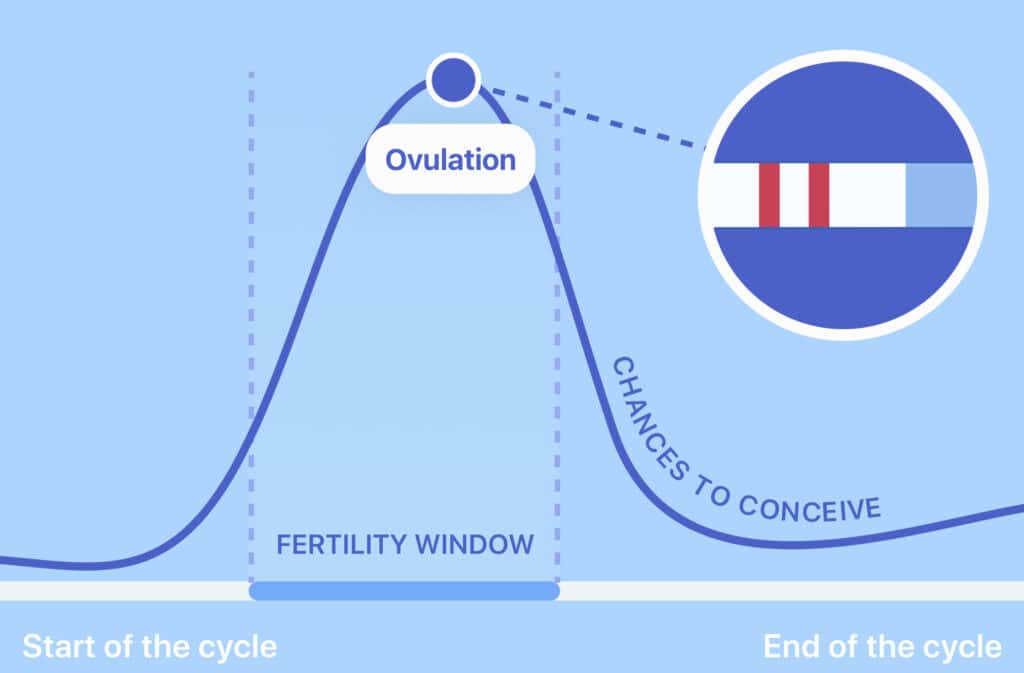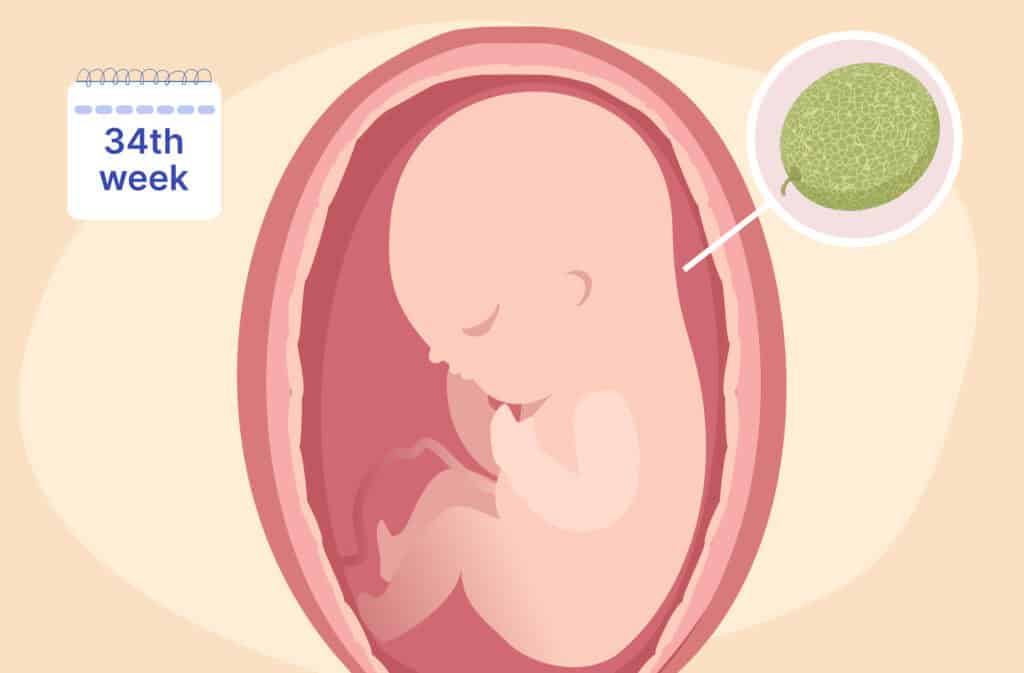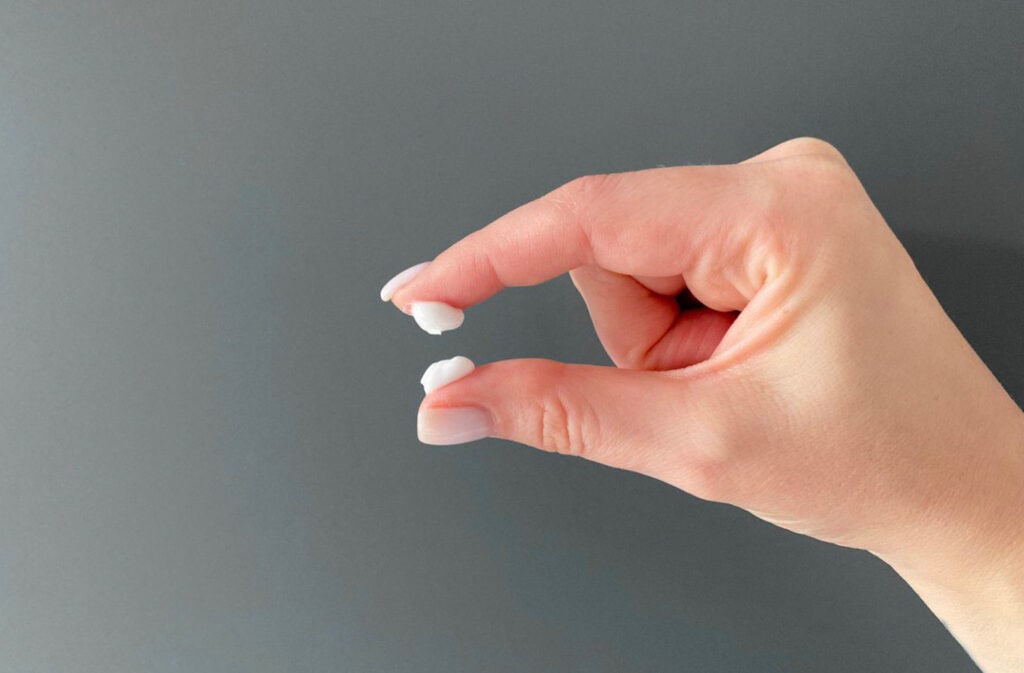Femia > Health Library > Getting Pregnant > Trying to conceive > How long after an LH surge do you ovulate? Timing and fertility insights
How long after an LH surge do you ovulate? Timing and fertility insights

- Updated Feb 11, 2025
- Published
CRAFTED BY HUMAN
Crafted by human At Femia, we provide accurate and up-to-date information at every stage of your journey, from trying to conceive, pregnancy and postnatal support. All content is created by a real person based on in-depth research and own professional experience. Femia ensures that you will receive expert advice, strict accuracy and a personalized approach from our authors/medical experts. Learn more about our editorial policy.
FACT CHECKED
Fact checked At Femia Health, we maintain the highest standards of editorial excellence in delivering content focused on helping you conceive, guiding you through pregnancy, and supporting you postpartum. Explore our content review principles to learn how we ensure the accuracy and quality of our health and lifestyle tips for every stage of your journey.
- A surge in the luteinizing hormone (LH) triggers ovulation. Ovulation usually occurs between 24 and 36 hours after the LH surge.
- Ovulation tests check for elevated LH levels to predict when ovulation will occur.
- Once an ovulation test detects your LH surge, you should have sex daily for the next three days.
As ovulation approaches, estrogen levels increase to prepare your body for ovulation. The high estrogen levels cause a fertility hormone called luteinizing hormone (LH) to surge. Typically, within 24 to 36 hours, the LH surge triggers the release of a mature egg in a process known as ovulation. The LH surge can help you identify when ovulation is likely to occur and ensure you have sex during your fertile window.
In this guide, we’ll cover the basics of LH surges and how to use this knowledge to maximize your chances of conceiving. We’ll answer questions like, “How long after LH peak do you ovulate?” and “How soon do you ovulate after LH surge?”
Femia offers the most accurate tool for determining ovulation and fertile days
What is an LH surge?
Luteinizing Hormone is a hormone produced by the pituitary gland at the base of the brain. After your menstrual phase, rising estrogen levels trigger a surge in LH, which causes the ovaries to release an egg. Your LH surge signals that you are in your fertile window; having regular sex during your fertile window will increase your chance of conception.
When does LH surge happen?
The LH surge usually kicks off around the middle of your cycle, often around day 14 in a typical 28-day cycle. However, it’s vital to note that not all women have a 28-day cycle. The only way to know your cycle length is to track your cycles and look for patterns. Some women have cycles that vary in length and regularity, though others have cycles that are as reliable as clockwork.
👉Find out more: If you ovulate in the morning can you get pregnant that night?
How long after LH surge do you ovulate?
Many women wonder, “When do you ovulate after LH surge?” Ovulation usually occurs around 24-36 hours after the LH peak. The exact timing varies between women and even between cycles. Ovulation tests can’t pinpoint the precise moment of ovulation; however, they can detect the LH surge that tells your ovaries to release an egg. When your ovulation strips detect the LH surge, it will be around 24-36 hours until ovulation.
How long after LH peak is ovulation?
The LH peak occurs when your LH is at its highest level before dropping back down. Once your LH peak has occurred, you usually have between 24 and 36 hours until ovulation after LH peak.
Once ovulation occurs, the egg is viable for 12-24 hours after release, so it’s crucial you time sex effectively. Having sex 24 hours after ovulation significantly reduces your chances of conception, as the egg is typically viable for 12-24 hours after release. Luckily, sperm can survive inside the female body for up to five days, so it’s still possible to get pregnant if you have sex before ovulation occurs.
Difference between LH surge and LH peak
LH surge (the rise in luteinizing hormone) and LH peak (the highest level of LH) are two closely related but distinct concepts describing changes in LH levels before ovulation. Understanding this difference helps correctly interpret ovulation test results and effectively plan for conception.
What is LH peak?
The LH peak is the moment when luteinizing hormone levels reach their maximum value during the surge. This is the point after which LH levels start to decline. The LH peak typically occurs 12-24 hours before ovulation. It marks the highest LH level during this phase.
Key differences between LH surge and LH peak
| Parameter | LH surge | LH peak |
|---|---|---|
| Duration | 24-36 hours | A brief moment within the LH surge, typically occurs 12-24 hours before ovulation |
| Function | Signals preparation for ovulation | Directly precedes ovulation |
| Outcome | Initiates physiological changes for ovulation | Peak LH release before decline |
This comparison helps to understand key moments in the ovulation process and accurately interpret ovulation test results for better conception planning.
Can you ovulate before LH peak?
While it is uncommon to ovulate before the LH surge, rapid hormonal fluctuations in some cases may result in ovulation timing that does not align with the typical pattern. However, rapid hormone surges could mean you miss the LH surge altogether. For this reason, you should try to have sex every two to three days throughout the month to ensure you have sex during your fertile window, even without knowing when it is.
Tips for tracking ovulation after LH surge
The following cycle-tracking tips can help to boost your chances of conceiving:
- Tracking your cycles. Identifying your fertile window can help you to time sex effectively. Sex during your fertile window is the only sex that matters for the purpose of trying for a baby. Tracking your cycles using the Femia app can help you identify when your fertile window will likely occur.
- Tracking your cervical mucus. Cervical mucus is a great way to see whether you’re ovulating. Your cervical mucus changes throughout the month, becoming slippery like egg whites around ovulation.
- Tracking your basal body temperature. In addition to using ovulation tests and tracking your cervical mucus, you can also track your basal body temperature (BBT). To do this, you must take your temperature as soon as you wake up every morning with a basal thermometer. Your body temperature increases after ovulation, so this method highlights when ovulation has occurred. Tracking your BBT for several months will help you build a picture of your cycles and predict when you might ovulate in the future.
- Using ovulation tests. Timing is everything when it comes to trying for a baby. Ovulation tests are simple tests you can do from home. The tests check for LH in your urine. A positive result indicates your LH surge, which means you should ovulate within the next 24-36 hours.
Femia offers the most accurate tool for determining ovulation and fertile days
Does LH surge always mean ovulation?
An LH surge usually precedes ovulation, but there are instances where ovulation may fail to occur. Anovulatory cycles are cycles where ovulation doesn’t take place. You may still experience an increase in LH during these cycles, but your ovaries won’t release an egg. Anovulatory cycles are common among women with polycystic ovary syndrome (PCOS).
If you think you may be experiencing anovulatory cycles or have an underlying reproductive health condition such as PCOS, make an appointment to see your OBGYN. Your doctor may recommend ultrasound monitoring to check for signs of ovulation. They can run tests, offer a diagnosis, and recommend treatment to maximize your chance of conceiving.
When to test for the LH surge
You test for the LH surge using at-home ovulation tests. It’s generally recommended that you start testing for LH around 20 days before your next expected period. However, if you have very short cycles, this could mean you miss it, so you may prefer to start testing as soon as your period ends. Follow the manufacturer’s instructions to ensure you test correctly.
👉 Find out more: Can an ovulation test detect pregnancy: Here’s what you may want to know
How long does LH stay elevated after ovulation?
The LH surge is short-lived, typically lasting 12-24-48 hours and ending with the LH peak, which occurs approximately 12-24 hours before ovulation. After the LH peak, levels of LH rapidly decline and usually return to baseline after ovulation. If your LH levels are persistently high, this could be a sign of an underlying condition affecting ovarian function.
When to consult a doctor
The more attention you pay to your cycles, the more likely you are to notice when something isn’t right. If your LH surges are inconsistent or absent, contact your OBGYN for advice. If your tests detect an LH surge but don’t notice any telltale signs of ovulation (such as egg-white cervical mucus or ovulation pain), make an appointment to visit your OBGYN. They may want to run tests to check your ovarian function. If your LH testing reveals high LH levels for longer than expected, seek advice from your OBGYN.
Most couples will conceive naturally within a year, so you should make an appointment to see your OBGYN if you haven’t conceived after 12 months of trying. If you are over 35 years old, reduce this to 6 months. If you are aged 40 or over or have underlying reproductive health conditions, such as PCOS or endometriosis, you should speak to your doctor as soon as you decide to try for a baby.
Questions from the Femia community
Can you ovulate without an LH surge?
It’s unlikely because the LH surge plays a crucial role in triggering ovulation. However, it’s possible to miss the surge if you start testing too late into your cycle.
What happens if the LH surge lasts longer than normal?
Generally, your LH levels should drop down within a day or two of ovulation. If this doesn’t happen, the prolonged LH surge could be a sign of ovarian dysfunction. Conditions, including PCOS and hormonal imbalance, can affect LH levels, so it’s important to speak to your doctor if you notice a longer-than-expected surge.
Can I get pregnant if I miss the LH surge?
Yes, it’s possible to conceive even if you miss the LH surge. Sperm can live inside the female body for up to five days, waiting for an egg to be released. Your fertile window begins five days before ovulation and ends the day after. It’s possible to conceive during this time even if you miss the LH surge.
What’s the difference between an LH surge and an LH peak?
The LH surge refers to the rise in LH levels in the body as you approach ovulation. The LH peak refers specifically to the highest point of this surge before your levels begin to drop back down.
The bottom line
The LH surge tells your ovaries it’s time to release an egg. Testing your LH levels during your expected fertile window can help you identify the LH surge and prepare for ovulation within the next 24-36 hours. Your fertile window starts five days before ovulation and ends the day after. Testing your LH levels allows you to determine when this fertile window has arrived so you can time sex effectively to boost your chance of getting pregnant.
Tracking your LH levels will tell you when ovulation is likely to occur. Combining this with other cycle-tracking methods can further increase your odds of conception. Also, tracking your cervical mucus can help you identify signs of fertile cervical mucus that indicate ovulation.
If you notice irregularities when checking your LH levels, make an appointment to see your doctor. Elevated LH levels for more than a few days could indicate an underlying health problem. Hormonal imbalance and ovarian dysfunction can cause unusual LH levels. Your doctor will be able to diagnose and treat your underlying reproductive issues and support you in achieving pregnancy.
References
- Behre HM, et al. Prediction of ovulation by urinary hormone measurements with the home use ClearPlan Fertility Monitor: comparison with transvaginal ultrasound scans and serum hormone measurements. Hum Reprod. 2000 Dec;15(12):2478-82. doi: 10.1093/humrep/15.12.2478. PMID: 11098014. https://pubmed.ncbi.nlm.nih.gov/11098014/.
- Chappel SC, Howles C. Reevaluation of the roles of luteinizing hormone and follicle-stimulating hormone in the ovulatory process. Hum Reprod. 1991 Oct;6(9):1206-12. doi: 10.1093/oxfordjournals.humrep.a137513. PMID: 1752920.
- Johnson S, Marriott L, Zinaman M. Can apps and calendar methods predict ovulation with accuracy? Curr Med Res Opin. 2018 Sep;34(9):1587-1594. doi: 10.1080/03007995.2018.1475348. Epub 2018 May 25. PMID: 29749274. https://pubmed.ncbi.nlm.nih.gov/29749274/.
- Kauffman AS. Neuroendocrine mechanisms underlying estrogen positive feedback and the LH surge. Front Neurosci. 2022 Jul 27;16:953252. doi: 10.3389/fnins.2022.953252. PMID: 35968365; PMCID: PMC9364933. https://pubmed.ncbi.nlm.nih.gov/35968365/.
- Lloyd R, Coulam CB. The accuracy of urinary luteinizing hormone testing in predicting ovulation. Am J Obstet Gynecol. 1989 Jun;160(6):1370-2; discussion 1373-5. doi: 10.1016/0002-9378(89)90857-0. PMID: 2660566. https://pubmed.ncbi.nlm.nih.gov/2660566/.
- Zinaman M, Johnson S, Ellis J, Ledger W. Accuracy of perception of ovulation day in women trying to conceive. Curr Med Res Opin. 2012 May;28(5):749-54. doi: 10.1185/03007995.2012.681638. Epub 2012 Apr 18. PMID: 22462529. https://pubmed.ncbi.nlm.nih.gov/22462529/.

Discover why bloating during ovulation occurs, if it is normal, and its symptoms, causes, how long it lasts, how to relieve it, and more.

At 34 weeks pregnant, your baby is gaining weight and getting ready for birth. Learn about symptoms, preterm labor signs, and contractions.

Discover what it means to have creamy, cloudy, or milky white discharge during your menstrual cycle, ovulation, and pregnancy, and when to consult a healthcare provider.

